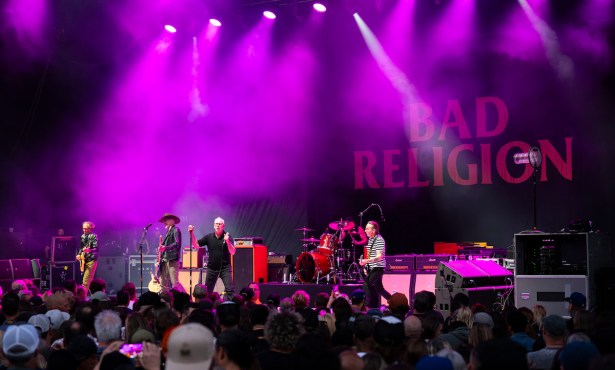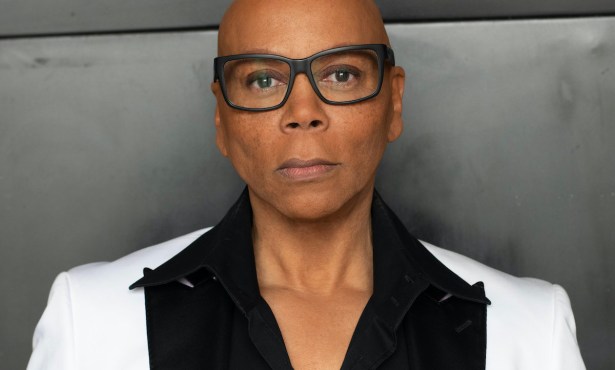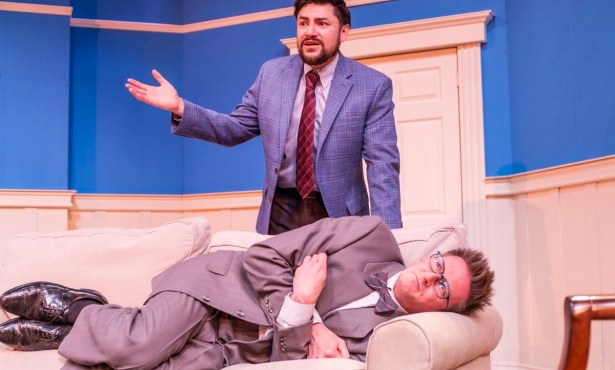Up Close with … Ian Putnam
Abstract Painter Responds to Nature
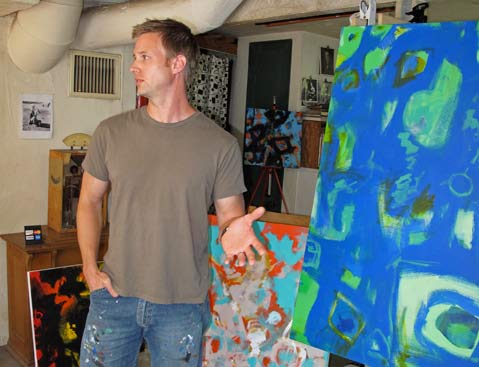
The studio near Cottage Hospital where Ian Putnam paints has the naturally productive feeling of a well-worn workshop, the kind of place where hours pass like minutes as things get made. It was for many years a studio for the restoration of art, and the tools of that trade still hang on their pegs, exuding authenticity and implying craftsmanship. Against this background, Putnam, originally from the East Coast, but now settled here with his wife and young daughter, paints intensely felt, searching abstractions in acrylic in a variety of sizes. His palette displays a cosmopolitan, post-Cubist freedom from realism, but his compositions, which at first read as pure abstraction, gradually reveal the logic of landscape and figure painting—two fields in which Putnam has done substantial apprenticeships.
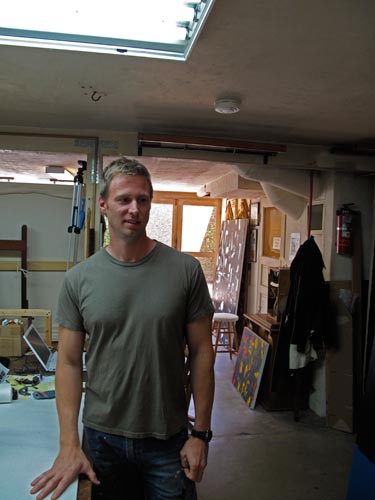
Listening to him describe his latest series of works, I was struck by the extraordinary vitality of painting as a discipline. Despite the ever-expanding cachet of multimedia and conceptual alternatives, the career of painting still manages to capture, challenge, and transform some of the liveliest, most imaginative people in art. Putnam has shown at Sullivan Goss—An American Gallery in a couple of its group shows, and he invites interested visitors to come to his studio. He can be reached at 245-4815 or ian@ianputnamart.com. His remarks about the inspiration for his most recent work follow.
“The fires last year were very disturbing to me. For my in-laws, who have lived here, they were not such a big deal, but I had to process it emotionally. During one of the fires, my wife was due to have a baby, and we were planning a home birth, and we couldn’t even open the window. So I took all that and I put it into these paintings because for me the optimism at the end of a difficult process is what I am always aiming at when I paint. I get immersed in the pain and the darkness and despair, but then I try to come out on the other side. The restructuring of this painting, for instance, has coincided with the rebuilding of the homes that were destroyed. And over here, what I have tried to capture is the way that the natural world regenerates, so I have been observing what’s happening in the natural world and then trying to bring that feeling into the studio. Now I have a group of ten paintings that I believe reflect not only my personal journey but also the process that we’ve gone through as a community as a result of these events, the Jesusita and the Tea fires.”

